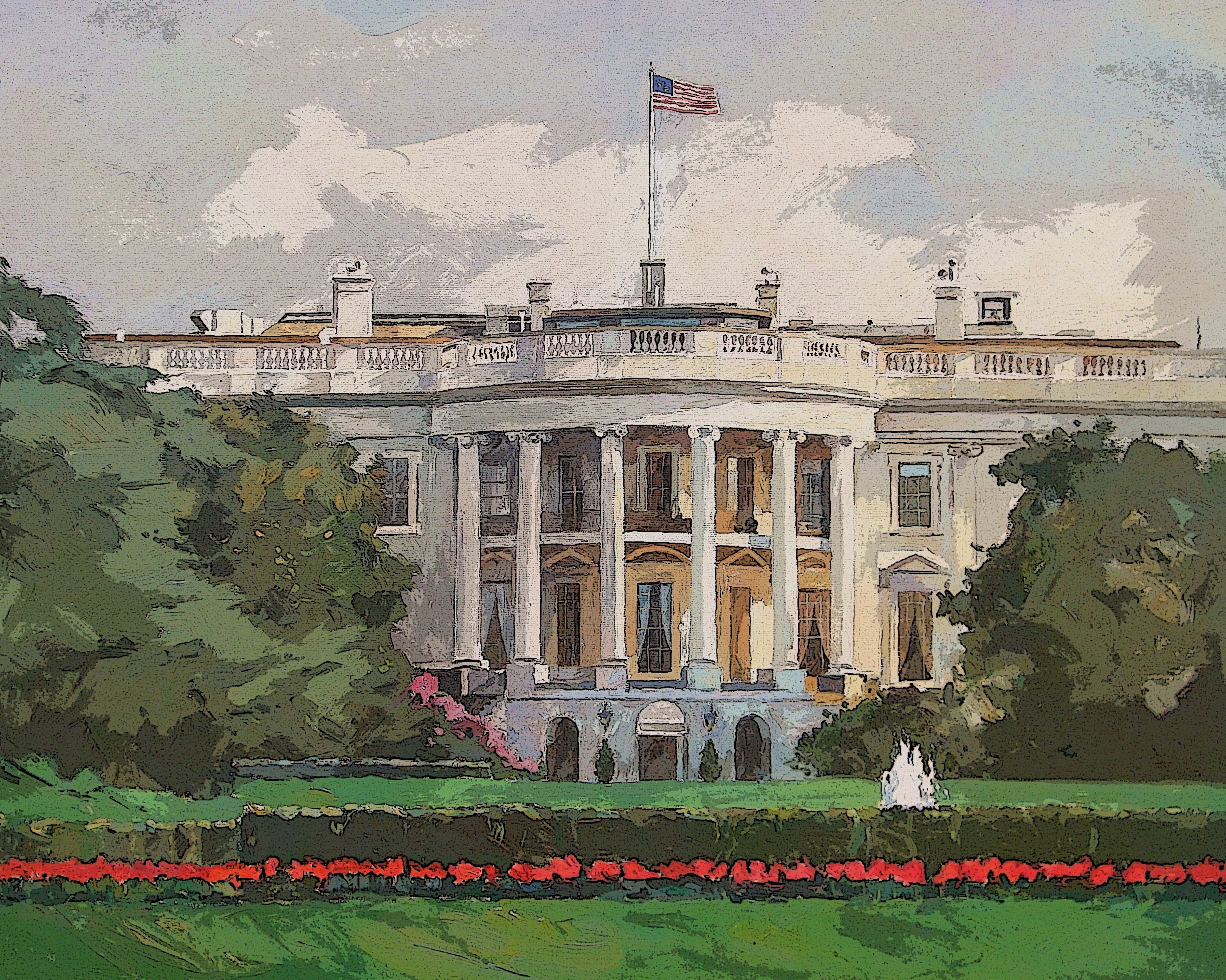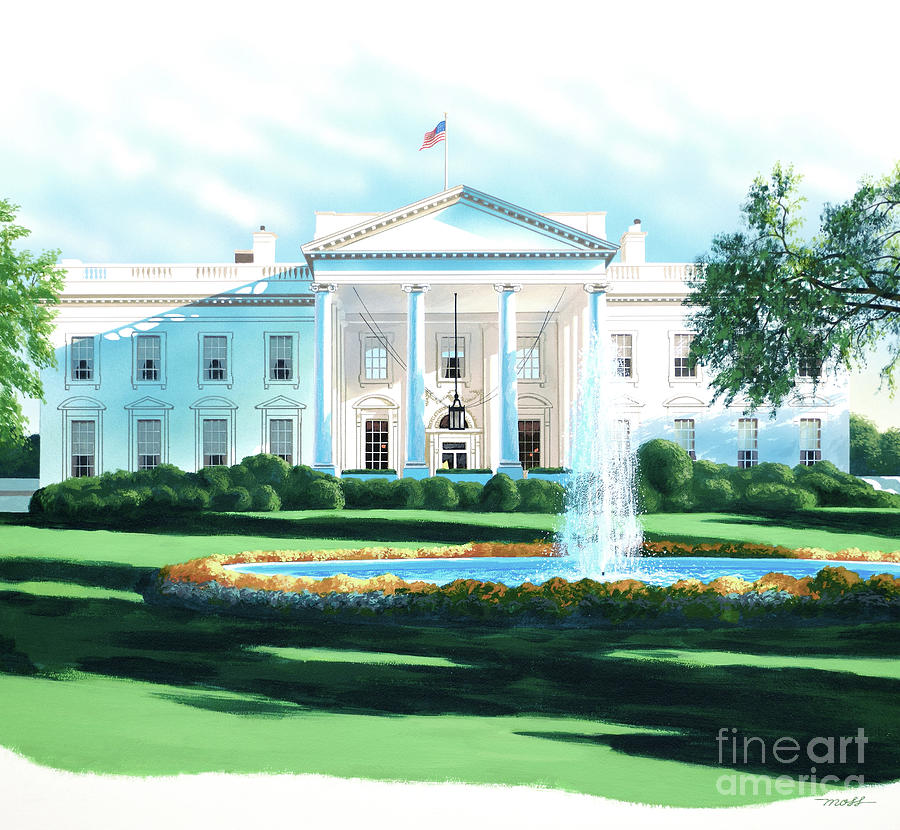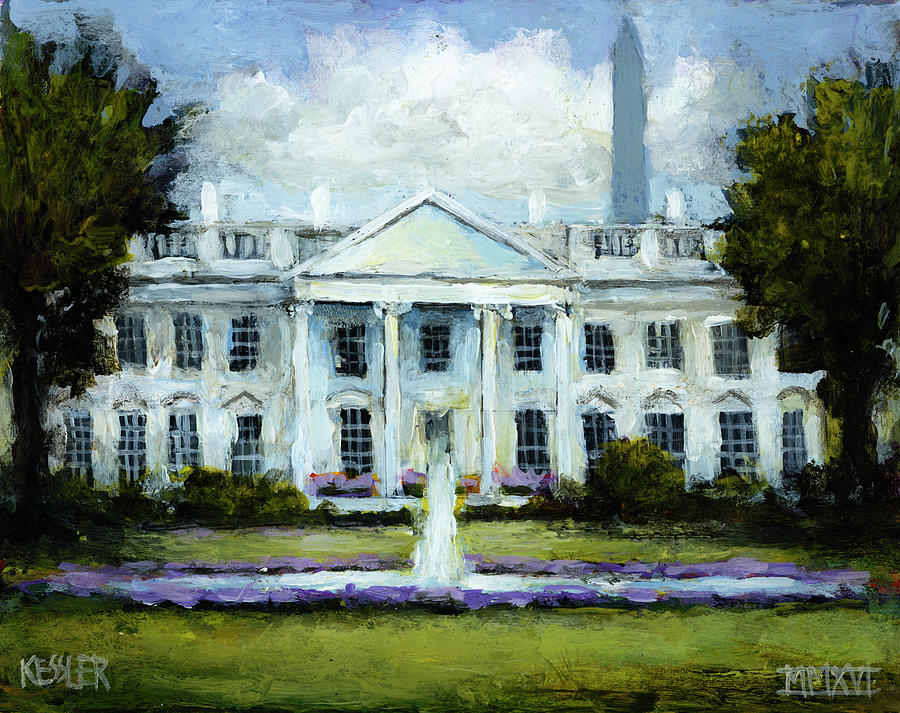Have you ever wondered what goes on behind the closed doors of the White House, beyond the political debates and policy decisions? Its a place of immense history, a stage for temporary residents, a functional office, and remarkably, a curated museum brimming with art that tells the story of a nation.
The White House isn't just a residence; it's a living testament to American history and culture. Its walls are adorned with paintings, sculptures, and decorative arts that have been accumulated over centuries. These pieces, acquired through donations, commissions, and purchases, reflect the evolving tastes and values of the nation. From presidential portraits to landscapes and contemporary works, the art collection offers a unique window into the soul of America. The collection is often called the pride of the american nation.
| Category | Information |
|---|---|
| Name of Collection | The White House Art Collection (also called the White House Collection or Pride of the American Nation) |
| Type | Paintings, sculptures, decorative arts, historical objects |
| Origin | Started with presidential portraits; grew through donations, commissions, and purchases. |
| Significance | Reflects American history, culture, and artistic tastes; provides a glimpse into the presidency and the nation. |
| Highlights | Works by American and European artists, historic objects associated with the White House and the presidency. |
| Access | Limited public access; viewable through tours and online resources. |
| Partnerships | The White House Historical Association, Artsy, and the Robert Rauschenberg Foundation have partnered for educational initiatives. |
| Website | The White House Historical Association |
The growth of the White House's art collection is a story in itself. It began modestly, with the acquisition of presidential portraits, often commissioned by Congress or donated by the descendants of former presidents. The first painting to enter the White House collection was a portrait of George Washington by Gilbert Stuart, a purchase authorized by the U.S. Government during John Adams's presidency, marking the beginning of an ongoing tradition. These initial portraits served not only as decorations but as symbols of continuity and leadership, anchoring the present to the past.
- Barry Manilow Garry Kief A Love Story Finally Revealed
- Missouri Teacher Sex Case Plea Deal Fallout Details
Over time, the collection expanded beyond portraits to include a diverse range of artistic styles and subjects. Landscapes, still lifes, and genre scenes by both American and European artists found their way into the White House, reflecting the evolving tastes of the presidents and first families who resided there. These acquisitions were often influenced by personal preferences, with each administration leaving its unique mark on the collection.
Donations have played a significant role in shaping the White House's art collection. Descendants of the Founding Fathers, recognizing the historical importance of their ancestors' legacies, have gifted valuable artworks to the White House. These donations often provide insights into the lives and times of the nation's earliest leaders, adding depth and context to the collection. Moreover, established artists and collectors have also contributed generously, further enriching the White House's holdings.
Commissions have also been an important means of acquiring art for the White House. Presidents and first ladies have often commissioned portraits of themselves and their predecessors, ensuring that the collection remains up-to-date and relevant. These commissions provide opportunities for contemporary artists to contribute to the White House's legacy, while also reflecting the changing styles and aesthetics of each era.
- Trippie Redd Coi Leray A Tumultuous Romance What Happened
- Janis Ian The Mean Girls Icon Behind The Scenes More
The selection and display of artwork within the White House are carefully considered, reflecting the tastes of the current administration and the historical significance of the pieces. Each president and first lady have the opportunity to curate the art that adorns the walls of the Oval Office, the private residence, and other prominent spaces. These choices can send powerful messages, conveying the administration's values, priorities, and vision for the nation.
One notable example is the story of a painting that came into the possession of Steven Spielberg, who later donated it to the permanent art collection of the White House in 1994. This painting, displayed in the Oval Office during the administrations of Bill Clinton, George W. Bush, and Barack Obama, often hung to the left of the president's desk, above a cabinet or table that also showcased Frederic Remington's sculpture, "The Bronco Buster." The presence of this particular artwork served as a constant reminder of American history and the enduring spirit of the West.
President George W. Bush, in his book "Decision Points," reflected on the impact of this painting, noting that before the September 11th attacks, he viewed the scene as a fascinating moment in history. However, after the attacks, it took on a deeper meaning, symbolizing the nation's resilience and determination in the face of adversity. This anecdote highlights the power of art to evoke emotions, inspire reflection, and provide solace during times of crisis.
The White House Historical Association plays a crucial role in preserving and promoting the art collection. This non-profit organization works closely with the White House to acquire, conserve, and interpret the art, ensuring that it remains accessible to future generations. The association also publishes books, articles, and educational materials that shed light on the history and significance of the White House's art collection.
Recent presidents and first ladies typically select their respective artists before leaving the White House and approve the portraits before their formal unveiling. This process ensures that the portraits accurately reflect the likeness and character of the individuals being honored, while also aligning with their artistic preferences. The unveiling of these portraits is often a highly anticipated event, marking the culmination of years of work and collaboration between the artists and their subjects.
In the late spring of 2016, the White House Historical Association, Artsy, and the Robert Rauschenberg Foundation partnered to provide university students in the United States with an opportunity to engage with the artwork and artifacts in the White House. Students were tasked with creating short videos that explored the historical and artistic context of selected pieces, fostering a deeper understanding and appreciation of the White House's cultural treasures.
The White House's collection of fine and decorative arts includes historic objects associated with the White House and the presidency, along with significant works by a variety of American and European artists and craftsmen. These pieces are carefully chosen to be consistent with the historic character of the house, reflecting the architectural style and decorative traditions of each era. The collection is not static; it evolves over time as new pieces are acquired and existing pieces are reinterpreted in light of changing historical and cultural contexts.
Since 1800, when the first work of art, the full-length portrait of George Washington, entered the White House collection, the collection has grown to encompass a diverse range of artistic styles and media. From the classical portraits of the early republic to the modern and contemporary works of today, the White House's art collection reflects the ever-changing landscape of American art.
It's important to note that the enduring visual of the White House's exterior, with its pristine white facade, has nothing to do with covering up any burning of the house by the British in 1814. The tradition of painting the White House white predates that event, stemming from the use of whitewash to protect the sandstone exterior from the elements. This misconception is often perpetuated in popular culture, but it's important to set the record straight.
Beyond the visual arts, the White House has also played a significant role in the performing arts. The phrase "Page the presidents and the theatre" evokes the idea of theatrical performances and cultural events that have taken place within the White House walls. From presidential addresses to concerts and theatrical productions, the White House has served as a stage for some of the nation's most important cultural moments.
References to the White House and the presidency can be found throughout literature and the arts. From William Seale's "The Man Who Came to Dinner at the White House: Alexander Woollcott Visits the Roosevelts" to Mary Jo Binker's "The Curse of the Presidential Musical" and Amy Henderson's "President and 1600 Pennsylvania Avenue," the White House has inspired countless works of fiction and non-fiction. These works offer insights into the lives of presidents, their families, and the challenges they faced while in office.
Paul F. O'Brien's "The American Presidents and Shakespeare" explores the relationship between American presidents and the works of William Shakespeare, highlighting the influence of literature on political thought and leadership. These diverse references demonstrate the enduring fascination with the White House and its occupants.
The idea that a painting can be a joke that currently hangs at the White House underscores the notion that art can be both aesthetically pleasing and intellectually stimulating. Art can be used to convey humor, satire, and social commentary, challenging viewers to think critically about the world around them. The presence of such a painting in the White House suggests that even within the halls of power, there is room for levity and self-reflection.
The fact that the White House is a home for temporary residents, an office building, and a museum highlights the multifaceted nature of this iconic landmark. It's a place where presidents and their families live, work, and entertain, while also serving as a symbol of American democracy and a repository of the nation's cultural heritage. The White House's dual role as a private residence and a public institution creates a unique set of challenges and opportunities for those who reside there.
The Avenue in the Rain, a 1917 oil painting by American Impressionist Childe Hassam, depicts Fifth Avenue in New York City during a rainstorm, draped with U.S. flags. This painting, which is one of six works by Hassam in the permanent art collection of the White House in Washington, D.C., captures the vibrancy and patriotism of the city during World War I. The painting's inclusion in the White House collection reflects the importance of art in expressing national identity and commemorating historical events.
The White House's art collection has evolved and grown over time, reflecting the changing tastes and priorities of each administration. The collection began with mostly presidential portraits, commissioned or purchased by Congress, or donated by presidential descendants. As the nation grew and its artistic landscape diversified, the White House's collection expanded to include a wider range of styles and subjects.
The first painting the White House ever had in its collection was a Gilbert Stuart portrait of George Washington, purchased by the U.S. Government when John Adams became the first White House resident. This portrait set a precedent for future acquisitions, establishing the tradition of honoring past leaders through art.
The painting was displayed in the Treaty Room of the White House from the Kennedy administration through the George W. Bush administration. This room, which has served as a meeting place for presidents and foreign dignitaries, provided a prominent setting for the artwork. The painting's presence in the Treaty Room symbolized the importance of diplomacy and international relations.
In his book "Decision Points," President Bush mentions the painting specifically, offering his personal interpretation of its meaning. He noted that before 9/11, he saw the scene as a fascinating moment in history, but after the attack, it took on a deeper meaning, representing the nation's resolve in the face of adversity. This anecdote underscores the power of art to evoke emotions, inspire reflection, and provide solace during times of crisis.
As a result of these evolving needs and priorities, the White House now has its own art collection, which presidents often tap when it is time to redecorate. This allows each administration to personalize the White House and create an atmosphere that reflects their values and priorities.
The Oval Office itself is not very large around 800 square feet but it is a powerful symbol of the presidency. The art that adorns the Oval Office walls is carefully selected to reflect the president's vision for the nation and to inspire those who enter the room.
The history of the White House is intertwined with the stories of many individuals, including Paul Jennings, an enslaved worker, and Thomas McGrath, the White House gardener. These individuals, though often overlooked in historical accounts, played a vital role in the White House's daily operations and contributed to its rich history. Their stories serve as a reminder of the diverse people who have shaped the White House over the centuries.
The quote, "Nothing makes a house a home like having portraits of its former occupants staring down at you from the walls," captures the essence of the White House's art collection. The portraits of past presidents and first ladies serve as a reminder of the individuals who have shaped the nation's history and offer a sense of continuity and tradition. The background of the quote is the Green Room, which underwent refurbishing during Mrs. Bushs time in the White House, a testament to the ongoing efforts to preserve and enhance this historic landmark.
The painting was a gift of the White House Historical Association, highlighting the organization's commitment to preserving and promoting the White House's cultural heritage. The association's contributions have helped to ensure that the White House's art collection remains accessible to future generations.
While choosing paint colors for the White House might seem like a daunting task, the reality is that white paint has always been a popular choice. Instead of spending hours agonizing over different colors, you can simply pick up a pot of white paint and get started. However, there's a lot more to choosing white paint than meets the eye.
Just like other more saturated paint colors, white comes in a massive range of shades, all slightly different in temperatures and undertones. The choice of white paint can have a significant impact on the overall look and feel of a room, so it's important to carefully consider the available options.
The inscription "Signed and dated lower left: Childe Hassam / February 1917" provides valuable information about the artwork, including the artist's name and the date of its creation. This information helps to authenticate the painting and to place it within its historical context.
The inscription "Inscribed on reverse, lower center" further enhances our understanding of the artwork. This inscription may contain additional information about the painting's subject, its provenance, or the artist's intentions. These details can provide valuable insights into the meaning and significance of the artwork.
The statement that Hassam was the most prominent of the Ten American Painters, a group founded in 1898 and influenced by recent French art, highlights the artist's importance within the American art world. The Ten American Painters were a group of Impressionist artists who sought to promote American art and to challenge the dominance of European art. Hassam's prominence within this group underscores his significant contributions to the development of American Impressionism.
The anecdote about President Donald Trump liking a painting of him having drinks with Abraham Lincoln and Richard Nixon so he put a print of it in the White House offers a glimpse into the personal preferences of the president. This anecdote suggests that even within the White House, there is room for personal expression and a sense of humor.
- Stevie Nicks Her Iconic Style Evolution Photos
- Survivor 50 Fan Voting Is Here Shape The Games Destiny


